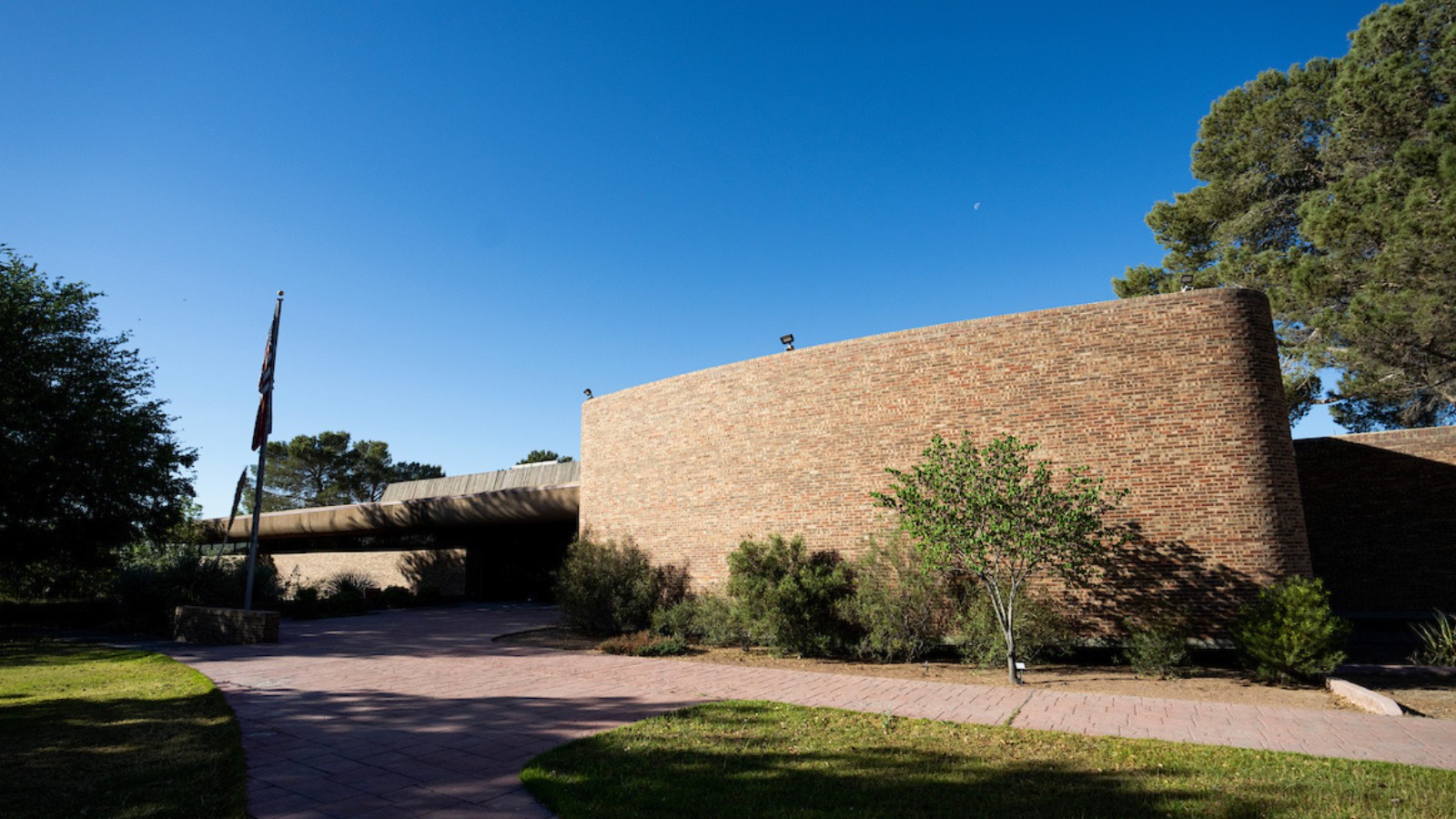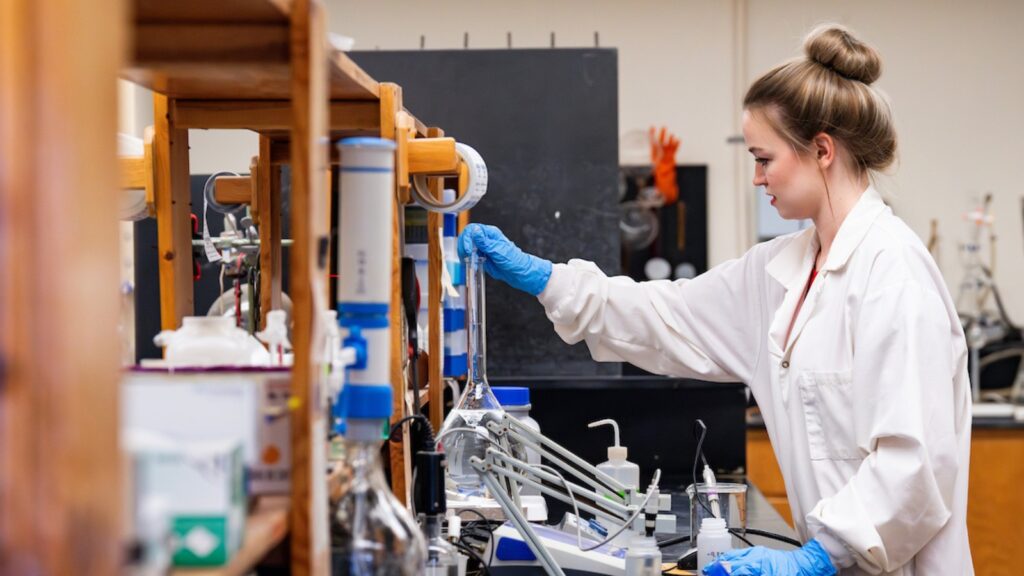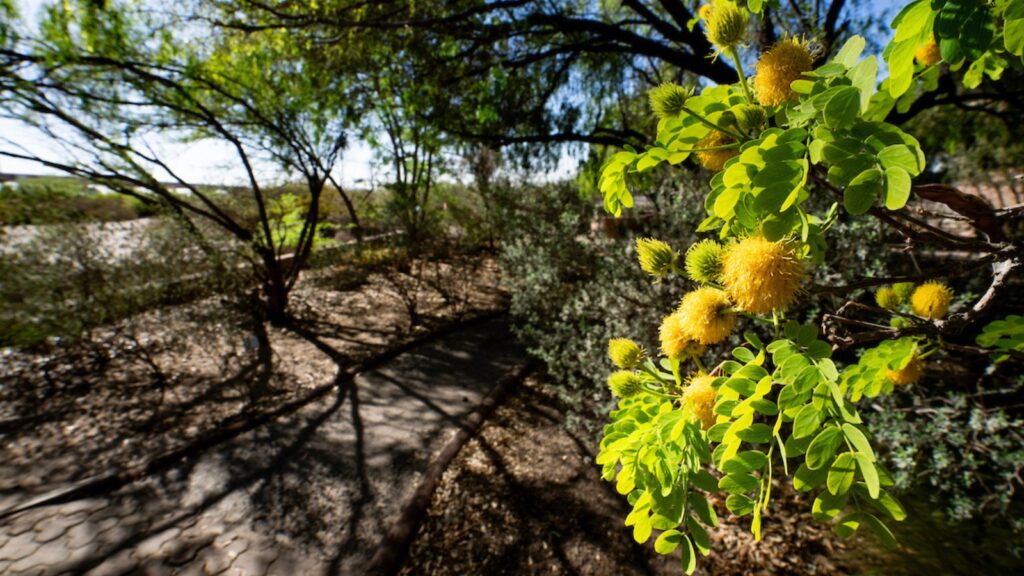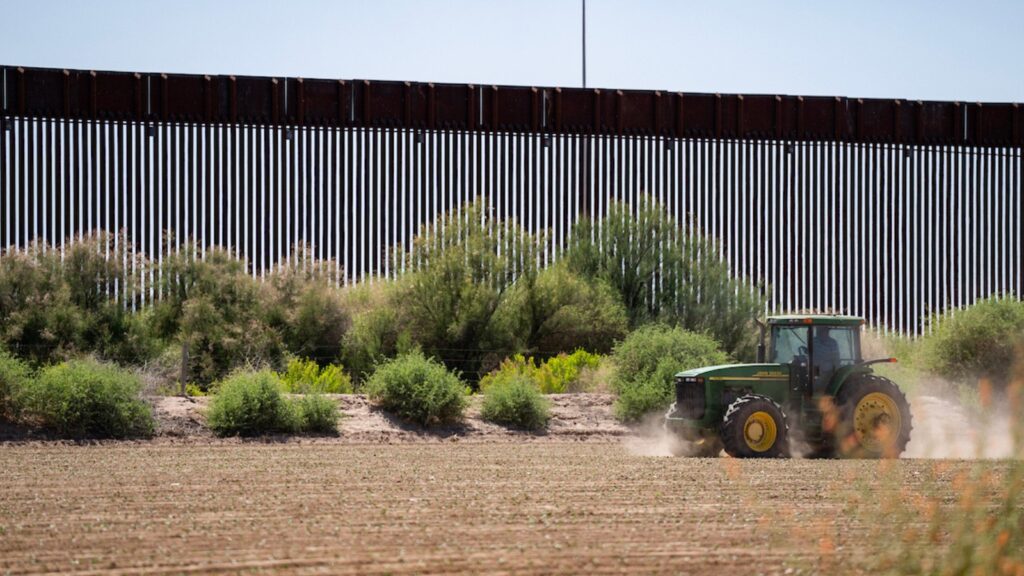
Facilities and Technologies at El Paso
Advanced spaces for leading-edge research and innovation
Facilities and technologies of the Texas A&M AgriLife Research Center at El Paso are distributed across a 44-acre site in El Paso and on a 190-acre site in Socorro. Eleven buildings provide 65,000 square feet of space for laboratories with extensive analytic equipment, offices, a classroom, a video conferencing room, a 200-seat auditorium and five greenhouses.
Research Center
Our main research center in El Paso sits on 44 acres of land that was donated by John and Betty McGuire, K. B. Ivey Investment Company, and Charles and Mary Gaither. Facilities were built in 1976 and include offices, laboratories with extensive analytic equipment, a 200-seat auditorium, classroom, video conference center, five greenhouses, an urban water-conservation landscape garden, and an award-winning cactus garden.

6,862 square feet of greenhouse space
A five-greenhouse complex at the El Paso center houses advanced lighting and controlled environment technologies for research on a range of crops. Current studies in the greenhouse space include CO2 gas detection experiments using hyperspectral imaging and research on the cotton disease Fusarium Wilt Race 4 (FOV4) to increase breeding lines for cultivar development and improve tolerance.
4,476 square feet of laboratory space
Sophisticated laboratories at the center support many research capabilities including imaging experiments for crop leaves; high-computing systems for analyzing large remotely sensed datasets; developing and simulating computer models; and maintaining sensors and equipment such as rovers and drones.


30 acres of research farmland
Currently research farmland is divided for a variety of different experiments: 20 acres for pecans, 8 acres for pistachios and 2 acres for experimental plots of canola, castor, switchgrass and sorghum.
200-seat auditorium
The center at El Paso hosts many visitors throughout the year in its 200-seat auditorium. The space includes presentation technology and seating for a growing list of public-private collaborators of the center.


Urban water-conservation landscape garden
Our urban water-conservation landscape garden is a demonstration of water-conserving practices that Far West Texas residents and industry can implement for aesthetics that conserve resources. The garden features an array of regional native plants and landscaping techniques. All gardens on the main Research Center campus are maintained by Texas Master Gardeners.
High desert cactus demonstration garden
The High Desert Cactus Demonstration Garden at the center was completed in 2007 by members of the Texas Master Gardeners and the El Paso Cactus and Rock Club. There are over 50 different varieties of cacti, all of which were either rescued from local land development sites or donated to the garden. In 2006, El Paso County received a 1st Place Exemplary Achievement Award for the project from the Texas Master Gardeners.

Research farm – Socorro

Our research farm in Socorro is a 190-acre research station established in 1942 on land donated by El Paso County. This was the original location of our main research center until 1976. The farmland is currently used to research and improve the production of crops such as pima cotton, pecans, and quinoa. A new building was added to the farmland in 1986 with offices, chemical analysis capabilities and hydraulic laboratories.